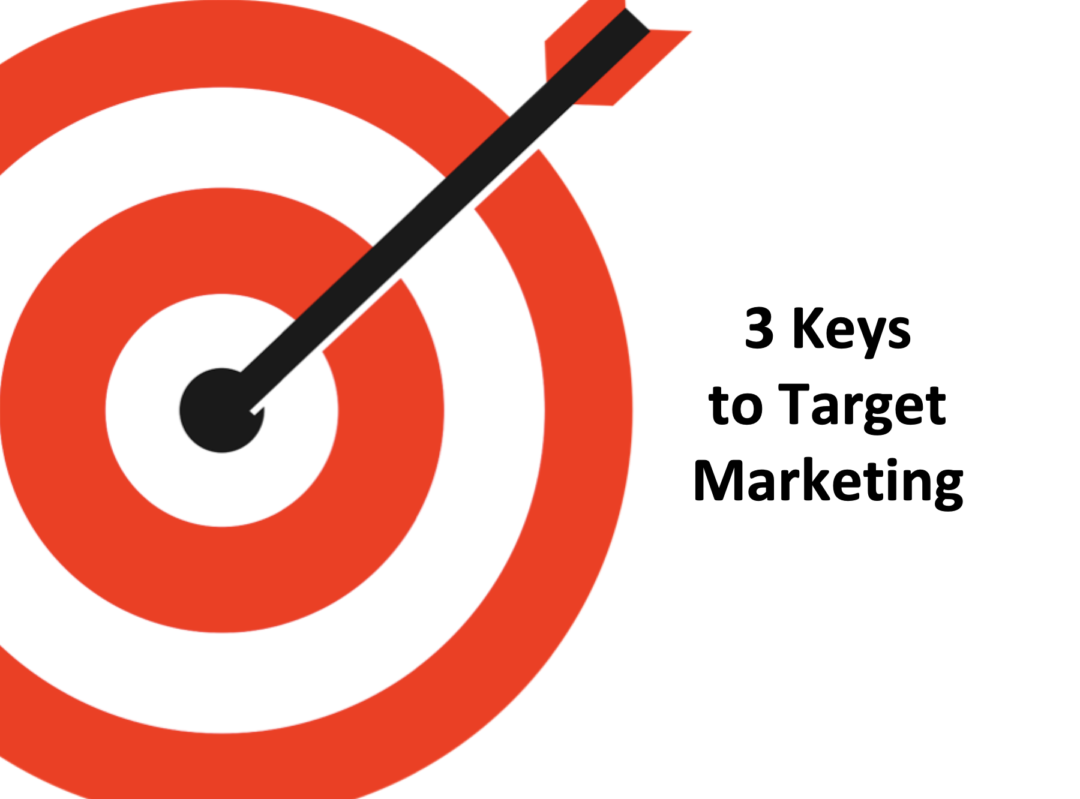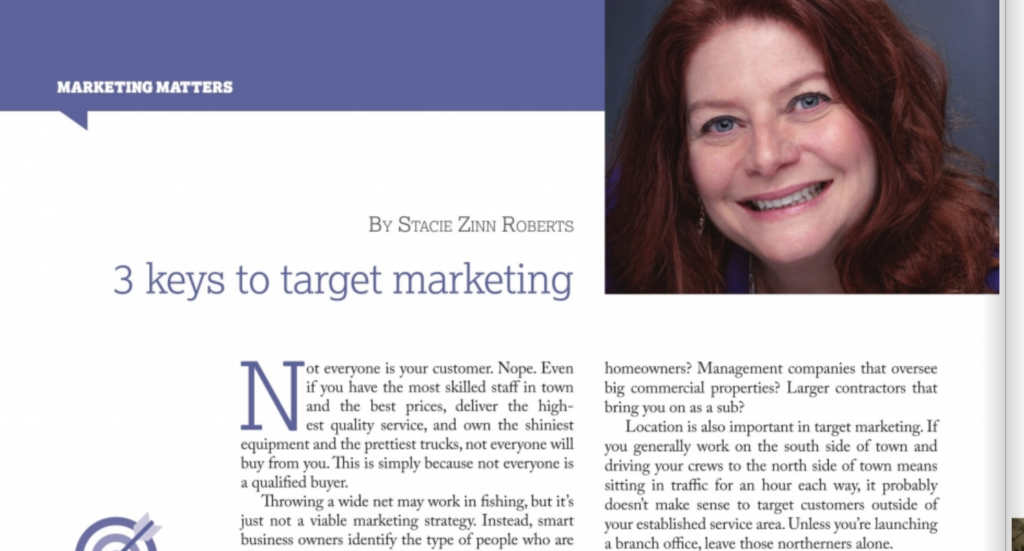3 KEYS TO TARGET MARKETING
Not everyone is your customer. Nope. Even if you have the most skilled staff in town and the best prices, deliver the highest quality service, and own the shiniest equipment and the prettiest trucks, not everyone will buy from you. This is simply because not everyone is a qualified buyer.
Throwing a wide net may work in fishing, but it’s just not a viable marketing strategy. Instead, smart business owners identify the type of people who are their best customers and focus on marketing to them. We call this target marketing. You target your messages to the group of consumers who are most likely to buy from you. Paying to advertise to anyone outside of your target audience is a waste of your hardearned money.
So why are you still marketing to everyone instead of only to your ideal customer? Here are the three keys to target marketing:
Key 1: Identify your target customers
Define the attributes and the demographics of the group of your most qualified buyers and target your efforts toward reaching that group. What does that look like? Consider if you were selling chewing gum; your target audience would most likely be teenagers, not older folks with dentures. If you were selling BMWs, your target audience would most likely be wealthy professionals older than 35, not 16-yearolds scraping money together for their first car. And since most of the readers of this magazine are selling landscape and irrigation services, your target audience is likely homeowners, not apartment dwellers who don’t have lawns of their own. A big mistake in our industry would be marketing to individual condo owners when it’s the management company that makes the vendor decisions for the homeowners association.
The best way to identify your target market is to look at your existing customer list. How would you describe the type of customer who currently buys from you? What do they have in common? Are they homeowners? Management companies that oversee big commercial properties? Larger contractors that bring you on as a sub?
Location is also important in target marketing. If you generally work on the south side of town and driving your crews to the north side of town means sitting in traffic for an hour each way, it probably doesn’t make sense to target customers outside of your established service area. Unless you’re launching a branch office, leave those northerners alone.
Key 2: Craft an effective message they need to hear
Think about who you are talking to in your marketing message. Use terminology they will understand.
Homeowners will be lost if you start talking about irrigation distribution uniformity and infiltration rates. Instead, tell them you’ll help them save water, save money or get back their free time if you do the landscape work for them. Make sense? Don’t spin a long story for commercial customers who want just the facts and your price in a succinct manner. Tell them what they need to hear, not necessarily what you want to tell them.
Key 3: Speak where they’ll hear it
Deliver your message through a medium where your target audience is likely to receive it. Be strategic about where you pay to put your marketing message. It might make you feel good to sponsor your child’s baseball team, and that’s valid, but don’t expect that sponsorship to help you win your next big commercial account. Maximize your dollars by advertising in publications that your target audience reads, exhibiting at trade shows that your target customer group attends or distributing flyers in the neighborhoods where you want to work.
If you follow these steps and spend your marketing dollar on the folks most likely to buy from you, you’ll have a better shot at meeting your revenue targets this year.
THIS ARTICLE WAS ORIGINALLY PUBLISHED IN THE APRIL 2020 ISSUE OF IRRIGATION & GREEN INDUSTRY. READ THE FULL STORY HERE

Stacie Zinn Roberts is a nationally recognized, award-winning writer and marketing expert with more than 25 years of experience. She has won more than 40 national awards for her work including the United Nations Environmental Program for retail environmental marketing, as well as from organizations such at the Public Relations Society of America and the Turf & Ornamental Communicators Association. She’s written for industry publications such as Golf Course Management, Sports Turf, Golfdom and PR Daily. She spent eight years as the president and director of marketing for Environmental Turf, where she developed the branding for SeaDwarf Seashore Paspalum, the grass that eventually became the greens grass for the Rio Olympic Golf Course. Stacie served for six years on the Board of Directors of the Florida Turfgrass Association as Chair of the Research & Scholarship Committee where she worked closely with the scientists from the University of Florida’s turfgrass breeding program. Stacie founded What’s Your Avocado? Marketing & Public Relations in 2012.



Excellent article. You are right on Stacie.
Thank you, Kathy! It’s so much better and cost-effective to be strategic.